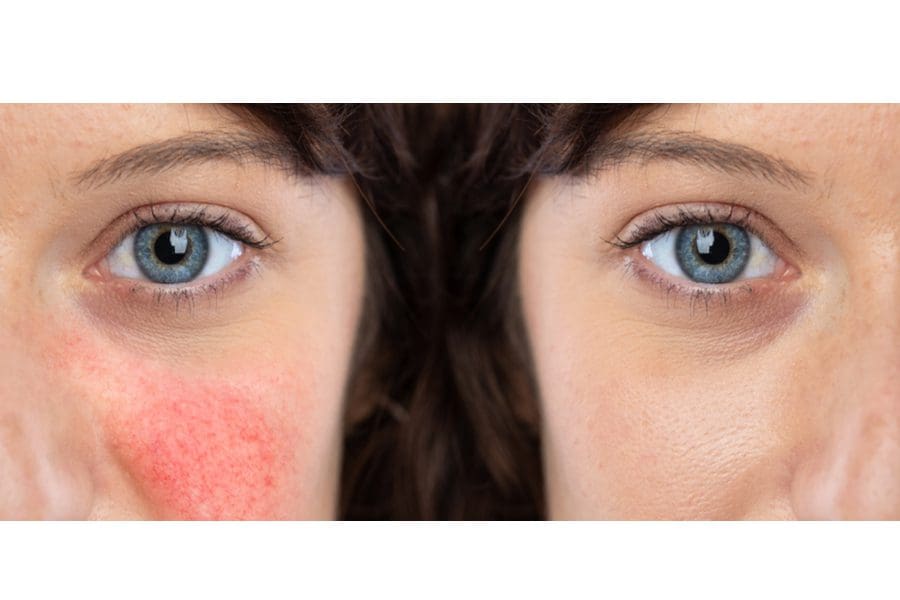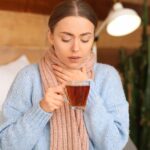No one knows exactly why some people develop the livid red rash and broken capillaries that spreads across cheeks and chin and signals the onset of rosacea. The chronic, inflammatory skin condition is thought to be the result of an immune-system overreaction to a certain bacteria called Bacillus oleronius or the outsized presence of skin microorganisms called Demodex mites. Rosacea often flares up without warning. It afflicts 16 million people and strikes women three times as often as men. The most common diagnoses come between the ages of 30 and 50.
Stress is the leading offender in triggering rosacea, although culprits also include spicy food, facials, sunshine, intense workouts and red wine. White wine was recently added to the list according to a new study in the Journal of the American Medical Association.
Common forms of the condition cannot be cured but can be kept under control. One of these is erythematotelangiectatic rosacea (ETR) and another is papulopustular rosacea (PPR). The first presents as redness, flushing and visible capillaries, while the second results in redness, swelling, and acne-like breakouts.
Keeping rosacea under control
The first step in getting rosacea under control is repair followed by treatment. Dermatologists recommend sufferers start relying on products formulated to soothe redness and sensitivity. Get rid of products that can irritate your skin barrier. Dump the scrubs, glycolic acids and anything that’s heavily fragranced.
The earlier you can start treatment, the better for your skin since rosacea is progressive. Ongoing treatment usually requires a good bit of time and a combination of at least two oral or topical drugs. Therapeutic agents such as light therapy or lasers for visible capillaries may also be needed.
What you eat can also play a big role in managing your symptoms. Some dermatologists recommend an eight-week elimination diet to observe the effects of ingredients with cinnamaldehyde, a vasodilator that promotes the dilatation of blood vessels. Bid goodbye to chocolate, citrus, cinnamon and tomatoes. Also say farewell to ingredients containing capsaicin, a chemical that affects the receptors in skin that feel warmth.
See your dermatologist for advice and try these products for repair:
Dr. Barbara Sturm’s Calming Serum. An ultra-soothing, plant-based serum that helps to soothe irritated skin and visibly reduce redness.
Dr. Jart’s Cicapair line. The Dr. Jart+ Cicapair Tiger Grass Color Correcting Treatment SPF 30 masks redness and evens skin tone, all while rejuvenating your skin. Chlorophyll-rich Tiger Grass is a super anti-redness ingredient.
La Roche-Posay’s Rosaliac CC Cream with ambophenol, a calming African plant extract. This does the work of a primer, moisturizer, foundation and sunblock all in one.
Ask your dermatologist about these doctor-recommended treatments:
Ivermectin is a drug used as an anti-inflammatory agent. The Demodex mite-killer was once available only in oral form and now was recently approved as a topical gel.
Oracea is a different antibiotic because it treats rosacea from the inside out. The low-dose oral medication may help treat inflammation below the skin to reduce the bumps and blemishes of rosacea.
Rhofade is a prescription topical medicine used on the skin to treat ongoing facial redness due to rosacea in adults. The FDA-approved cream contains the same active ingredient as Visine and reduces redness by constricting blood vessels.






